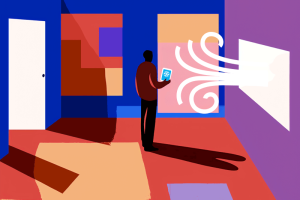At Thompson Kane, we stay ahead of shifting market trends so you don’t have to.…
10 Ways to Save Energy in Your Home
Owning a new home provides the exciting opportunity to enhance both its comfort and efficiency. By making your dwelling more energy-efficient, you can cut down on your carbon footprint and save on utility expenses. Below, we’ve prepared a practical checklist to help you save energy in each nook and cranny of your home.
- Install Ceiling Fans: Ceiling fans can aid in distributing air more evenly, enabling you to set your thermostat a few degrees higher in the summer and lower in the winter.
- Enhance Insulation: Adequate insulation is pivotal in maintaining a comfortable indoor temperature. Make sure your attic and walls are sufficiently insulated to prevent heat loss in the winter and heat gain in the summer.
- Light Efficiently: Swap out those old incandescent bulbs for energy-efficient LED lighting in every room. LEDs consume far less energy and have a longer lifespan, reducing the need for frequent replacements.
- Thermostat Upgrade: Invest in a programmable thermostat that lets you tailor temperature settings to match your daily routine. Set a lower temperature for when you’re away and when you sleep to trim heating and cooling expenses.
- Seal Gaps and Cracks: Inspect your windows, doors, and other openings for any gaps or cracks. Seal them using weather stripping and caulk to keep drafts at bay and lessen the workload on your heating and cooling system.
- HVAC System Maintenance: Regularly service your heating and cooling system. Clean or replace filters, schedule annual check-ups, and maintain the system in peak condition to maximize its efficiency.
- Energy-Efficient Appliances: When the time comes to replace appliances, opt for models bearing the ENERGY STAR label. These appliances consume less energy and perform just as well, if not better, than standard counterparts.
- Unplug Electronics: Many electronic devices continue to draw power even when powered off. Utilize power strips to easily disconnect multiple devices at once when they’re not in use, reducing “phantom” energy consumption.
- Embrace Natural Light: Harness natural daylight during the day to minimize the need for artificial lighting. Consider installing light-colored curtains or blinds to allow more light in while maintaining privacy.
- Upgrade Windows: If the need arises to replace windows while you occupy your home, think about upgrading to energy-efficient windows. Double-glazed or low-emissivity (low-E) windows can help regulate indoor temperatures, easing the burden on your HVAC system.
By incorporating these energy-conserving strategies in each room of your home, you can create a more comfortable environment and reduce energy consumption at the same time. This not only leads to lower utility bills but also contributes to a greener, more sustainable future.





